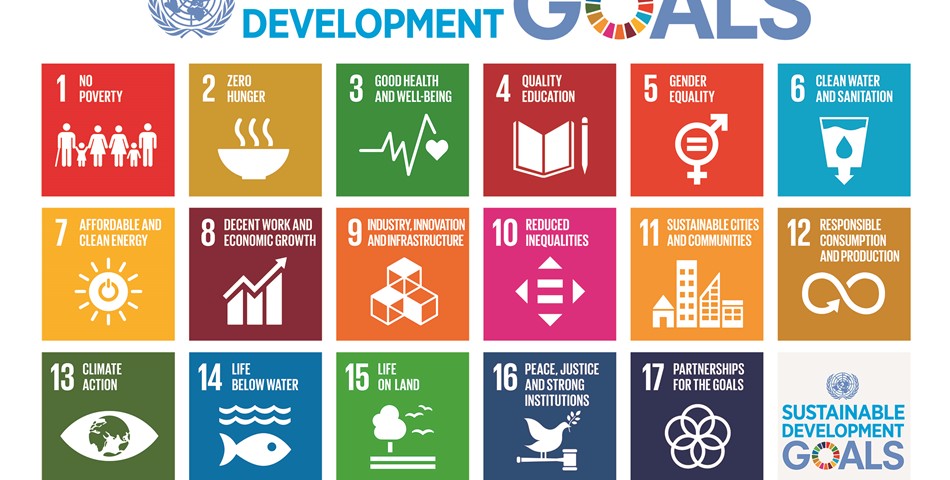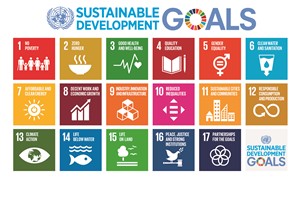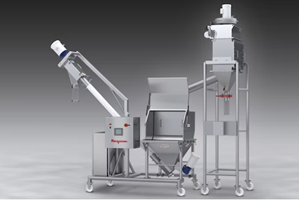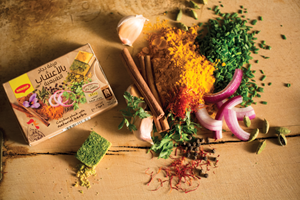Around the globe, more people than ever are adopting a sense of personal responsibility when it comes to the food they consume and the products they purchase. It is their way of feeling good about what they put in their bodies and, as consumers, lessening their impact on the ecosystem. Couple that behavior change with the burgeoning population growth that’s expected - 10 billion by 2050 with much of it concentrated in countries like Africa - and it’s certain that opportunities and challenges abound. The need for sustainable food systems is vital not only to feed the surging population but also to minimize the impacts of climate change. For food manufacturers, these realities also come with a responsibility to deliver comprehensive solutions across the value chain. Driving real change will take inclusive partnerships, business-driven strategies, and in many instances, a little creativity.
A global agenda
More and more companies are viewing sustainability as a necessary strategy in their organizations and are looking for partnerships and guidance in embedding sustainability goals into their business practices and innovation processes.
The United Nations’ Sustainable Development Goals (SDGs) serve as a model on the necessary elements to make an impact for our future.
Adopted by the UN in 2015, the 17 SDGs were instituted to help guide governments, businesses, civil society and people toward contributing to a more sustainable world. Since then, organizations are also seeking assistance through workshops and third-party institutions on how to create and capture business value through SDG business alignment and new business models.


The key is taking a holistic look at opportunities throughout the supply chain-driving improvements, delivering innovation and instituting practices that don’t already exist.
From sourcing to solutions
Beginning with the earliest stages of sourcing, it’s important to build transparent, responsible supply chains for all sourced materials. For instance, while there’s been a long-standing connection between the seafood industry and global sustainability, there’s another resource in our oceans that lies ripe for sustainable practices.
Last month, DuPont Nutrition & Health announced the development of the very first sustainable seaweed program specifically for the hydrocolloid industry to help guide seaweed farmers and harvesters toward the adoption of more sustainable practices supporting UN SDG 14 ‘Life Under Water’ that involves conserving and sustainably using the oceans, seas and marine resources. The program, developed in collaboration with the Anderson Cabot Center for Ocean Life at the New England Aquarium, will help seaweed farmers and harvesters along the coastlines of Africa and other countries around the world develop a working knowledge of sustainable practices and enhance their ability to be good stewards of their farms and seaweed beds. For many of these people, their livelihoods and family’s futures depend on running sustainable operations.
The principles of the program look at environmentally sound processes but also fair treatment and safety of workers. While the seaweed program isn’t a certification, it is focused on promoting best practices related to environmental and social aspects of sustainability ensured by training, performance tracking and internal audits. Better utilizing resources to reduce carbon footprints at production sites also enable sustainable changes. In particular, use of waste streams—from energy, chemicals, or bio-based materials—is crucial both economically and environmentally. Our wood-based low-calorie sweetener XIVIA® Xylitol, is produced from a side-stream called ‘red-liquor’ from pulp and paper mills. It is a close loop where the remaining side-stream is returned to the pulp and paper mill and used for energy production.


A recent update of a third party-reviewed life cycle assessment, shows that XIVIA® has a 5-10 times lower environmental footprint from cradle-to-gate compared to conventional xylitol produced from corn cobs. In some instances, driving improvements can stem from dire circumstances. Since 2015, the area near DuPont’s Cape Town, South Africa site has experienced gradually decreasing rainfall. Increased urbanization and rising temperatures also contributed to dwindling volumes of water stored in the city’s five major dams. After a projected drought earlier this year, DuPont and other local commercial property owners were tasked with reducing water usage by 45 percent from the pre-drought period in 2015. No action was too small to achieve the task—from eliminating irrigation to reducing water flow throughout the site to increasing tanks to collect rain water for use in productions, employees got creative to help replenish the water supply. But perhaps the biggest need for solutions is in food waste, which is one of the most prominent waste streams. As much as 30 percent of food produced globally is lost or wasted in the value chain and each kg of food waste represent 4-5 kg of CO2e emissions in average.
UN SDG 12 calls on all nations to halve food waste and reduce food loss by 2030. The Food and Agriculture Organization of the UN notes that food losses and waste amounts to roughly USD680 billion in industrialized countries and USD310 billion in developing countries. In Africa alone, about half the food produced is wasted. The amount of food lost is enough to feed 300 million people, which means the country produces more than enough to feed its population. Therefore, the answer lies in protecting the food, to control spoilage organisms and pathogens while extending shelf life. Protective cultures are a good example.
Used in white cheese, they are a clean-label way to extend shelf life by up to three times, reducing food waste and saving more than 400,000 tons of carbon dioxide equivalents (CO2e) if applied globally. Tailored enzyme solutions for bread products have a similar effect, slowing down staling, allowing the bread to stay fresh and soft for longer and ultimately reducing food waste significantly. Protecting food is a particularly critical issue in places where transporting products across great distances is a challenge.
In Kenya, some producers of fermented products found a solution to the issue with DuPont’s HOLDBAC® YM Protective Cultures, which created a longer shelf life for their white cheese. These food manufacturers sought to move away from preservatives by using a clean label formula. Adding protective cultures can make a tremendous difference in situations where hygienic standards are challenged by the local circumstances.
Some solutions come packaged in a complete concept, such as the GRINDSTED® Yo-Tex stabilizer for ambient yogurt which has proved to be a critical solution for partners in South-Africa and Kenya. The Yo-Tex system creates a longer product shelf life – extending it from 21 days to seven months or more while eliminating the need for refrigeration. That makes this concept ideal for manufacturers who want to distribute their products over longer distances and to stores and consumers where refrigerators are not always available. Healthy dairy products reach areas where they may not already be – by transport that is lower on energy consumption as no cooling is required.
Playing a role
Of course, these solutions need to be customized at a local level. But they need to happen everywhere. No one has a larger role to play in achieving a sustainable future than food manufacturers. It’s a challenge we must face head on—with partners, structure, and a little ingenuity. Because it’s one we can’t afford to lose.
DuPont Nutrition & Health














